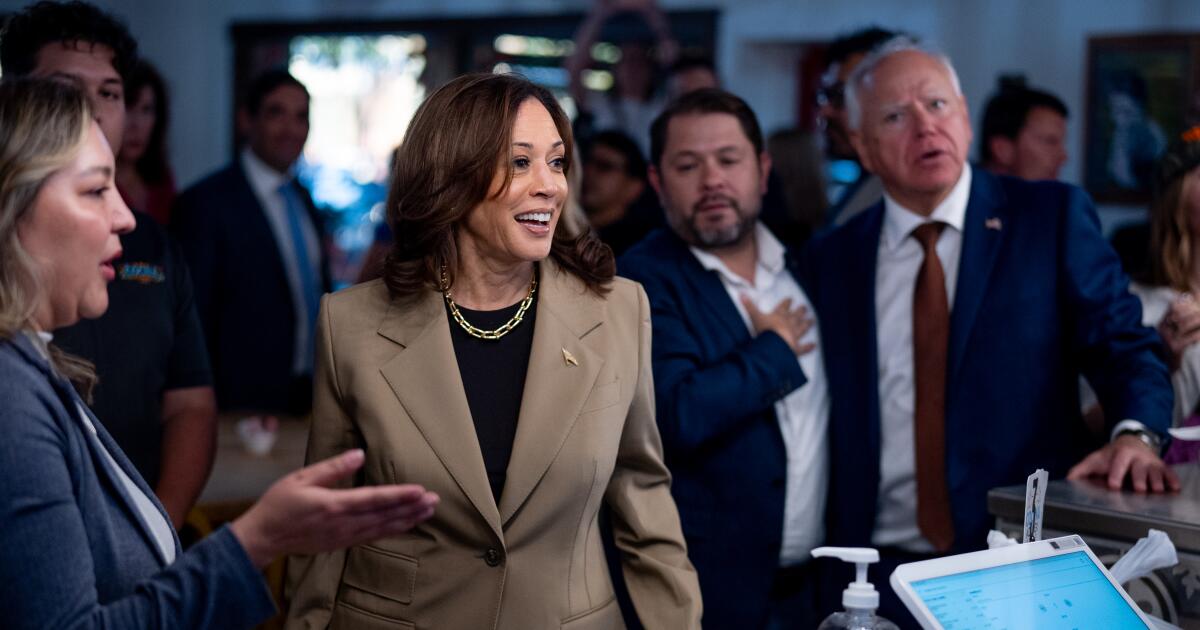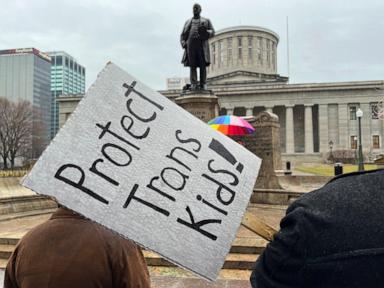
We judge presidential candidates on so many extraneous criteria: the style and color of their clothes, their hair, their height; whether they laugh or smile or scowl. The legendary food writer M.F.
K. Fisher wrote , “First we eat. Then we do everything else.
” In that spirit, I think it’s our patriotic duty to add how and where Kamala Harris and Donald Trump dine out to the list. It turns out not to be extraneous at all. Second Gentleman Doug Emhoff says that when he and Vice President Harris are at home in Brentwood they like to go to Farmshop , a relatively recent addition to the 76-year-old Brentwood Country Mart, whose outdoor dining area is an exercise in culinary democracy.
You can sit at a wooden picnic table with a $6 cappuccino and a $5 muffin, or you can claim space for the price of a $2.95 agua fresca from Frida’s Taqueria. Since 1979, Reddi-Chick has served massive barbecue chicken sandwiches and fries to generations of teens.
The place has history. It’s a local gathering spot, even if some of the locals are named Harris/Emhoff, or Spielberg, or Schwarzenegger, and its celebrity history traces back to Elizabeth Taylor and beyond. You don’t have to be one of them to join in.
We’ve heard about the dining scene among members of the opposite constituency — the standing ovations when Donald Trump enters the dining room at Mar-a-Lago; his very rare visits to restaurants , usually ones in hotels he has owned in New York and Washington, D.C.; his unwavering commitment to well-done steak with ketchup .
His relationship to dining out seems to prize control above all else. Lately I have begun to wonder if he might in fact enjoy the menu at a place he’s never been to before, but that’s my own past talking. My family owned a little restaurant supply company in Chicago, and we often landed at a neighborhood restaurant that discounted the bill because the owners owed my father money.
I learned to like lots of different foods, but more to the point, I learned to love the promise of culinary and conversational surprises. For more than 30 years my go-to in L.A.
has been Il Forno , a mini-mall Italian place whose 80-year-old owner, a Romanian immigrant, still works five nights a week; I have yet to see him sit down for more than 10 minutes because there are always regulars to greet and newcomers to welcome. And as much as I like the food, I like the continuity — the young business partner who started out as a busser, the senior server I first met when he was 18, the familiar faces at nearby tables. Such restaurants are a throwback to the era before social media and reality television added a competitive edge to dining out — rarely in the limelight but important in a more lasting way.
They are the unsung heroes of the hospitality business. They get us off the couch and into a larger community. There’s a reason campaigns include stops at places like Il Forno for a photo op.
Candidates try a dish they might not otherwise consume, in a neighborhood they might never have visited before, amid a crowd of proud locals. It’s a shorthand for acknowledgment: We break bread together; I know you exist. In fact, you rarely see a candidate eat what they’ve ordered because it’s hard to look presidential while you’re chewing, but we can still sense a different comfort level between the candidates.
Harris brought the action to a halt in Savannah, Ga., sharing her recipe for greens with award-winning chef Mashama Bailey. Trump handed out what he dubbed “crypto burgers” at a New York City bar two days after the announcement of his family’s new cryptocurrency business.
A personal connection on the one hand, a business connection on the other. And that, more than Trump’s siloed food choices (including his second burger-centric stunt last Sunday), is the point. Dining out is never just about the food, but about the possibility of an unscripted moment on or off the menu.
Regular people can get as close to Harris and Emhoff at the Country Mart as their security detail will allow. Nobody can get near the Trumps at Mar-a-Lago without paying the club dues. If the Democrats land in the White House, the first couple will be accompanied by an even larger phalanx of Secret Service agents standing between them and spontaneity.
But the Obamas managed to dine out — Vogue magazine called the list of their restaurants-in-office too “exhaustive” to keep track of , even if public outings required an abnormal amount of preplanning. Residents of Springfield, Mo., packed a Haitian restaurant last month to show support in the aftermath of racist rumors about immigrants consuming pets; although some people dismiss restaurants as irrelevant to the important issues of the day, I guess that news hadn’t reached Springfield.
Let me quote another food writer from long ago: In “The Physiology of Taste,” published in 1825, Jean Anthelme Brillat-Savarin wrote, “Tell me what you eat and I’ll tell you who you are.” In the midst of a polarized presidential race, the relevant rewrite might well be: “Tell me where you eat,” in the larger world or shielded from it, “and I’ll tell you who you are.” And how you feel about the people you propose to represent.
Karen Stabiner is a journalist, novelist and author of six nonfiction books..













